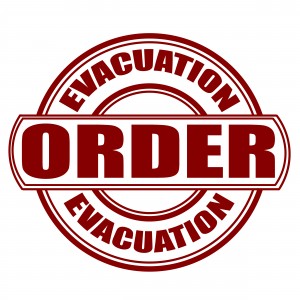Last Friday, Texas’ highest court unanimously endorsed lower court and federal court decisions giving effect to anti-concurrent causation (ACC) clauses and held that such provisions bar coverage where a combination of an excluded peril and an included peril operate together to cause the loss. In JAW The Pointe, LLC v. Lexington Ins. Co., 2015 WL 1870054, 2015 Tex. LEXIS 343 (Tex., Apr. 24, 2015), that meant that the insured could not recover where flood and wind damage triggered the enforcement of city ordinances even though the covered wind damage component was arguably sufficient in and of itself to cause the loss.
 The policyholder owned The Pointe Apartments – a complex in Galveston, Texas that was heavily damaged when Hurricane Ike came ashore on September 13, 2008. Lexington afforded the primary layer of property insurance protection under a $25 million all-risk contract of insurance that covered dozens of local apartment complexes. Wind was not an excluded peril, and Lexington paid its building consultant’s estimate ($1,278,000) for the wind damage in full.
The policyholder owned The Pointe Apartments – a complex in Galveston, Texas that was heavily damaged when Hurricane Ike came ashore on September 13, 2008. Lexington afforded the primary layer of property insurance protection under a $25 million all-risk contract of insurance that covered dozens of local apartment complexes. Wind was not an excluded peril, and Lexington paid its building consultant’s estimate ($1,278,000) for the wind damage in full.
Galveston City ordinances required that any complexes that were “substantially damaged” – meaning that they sustained damage equal to or exceeding 50% of market value – be raised to a base flood elevation, however, and raising The Pointe 3’ was not feasible. After the policyholder submitted a repair permit application with a repair estimate of $6,256,887, which was well in excess of the city-determined market value of $2,247,924, Galveston notified the insured that it had determined that the ordinances had been triggered, and the policyholder elected to demolish and rebuild the apartments. Read more ›

 The April 8, 2015 decision of the California Court of Appeals in
The April 8, 2015 decision of the California Court of Appeals in  The case was a proposed class action by a West Liberty, Kentucky dentist whose office was damaged by a tornado and an Owingsville, Kentucky homeowner whose residence was hit by a fire. In both cases, the State Farm policies afforded replacement cost coverage but authorized the carrier to make its initial payment on an ACV basis. In the two cases, the insurer calculated ACV by determining replacement costs and then depreciating both materials and labor. The policyholders argued that labor, unlike construction materials which logically age and wear and tear, was not subject to depreciation.
The case was a proposed class action by a West Liberty, Kentucky dentist whose office was damaged by a tornado and an Owingsville, Kentucky homeowner whose residence was hit by a fire. In both cases, the State Farm policies afforded replacement cost coverage but authorized the carrier to make its initial payment on an ACV basis. In the two cases, the insurer calculated ACV by determining replacement costs and then depreciating both materials and labor. The policyholders argued that labor, unlike construction materials which logically age and wear and tear, was not subject to depreciation. The policyholder had a rental property in a “relatively isolated location” that was vacated by the last tenant in February 2010. On December 20, 2011 the home was damaged by a fire. Subsequent investigation indicated that it was a “warming fire” set by a transient that got out of hand when he attempted to kick the burning firewood out the back door.
The policyholder had a rental property in a “relatively isolated location” that was vacated by the last tenant in February 2010. On December 20, 2011 the home was damaged by a fire. Subsequent investigation indicated that it was a “warming fire” set by a transient that got out of hand when he attempted to kick the burning firewood out the back door. Oklahoma has experienced a remarkable rise in earthquake activity in recent years. According to the Oklahoma Geological Survey, the state had 567 quakes of Magnitude 3.0 or greater in 2014. That was a five-fold increase over 2013, a 14-fold increase over the 2008-2012 average, and a 100-fold increase over earlier years. The 2014 number exceeded the total number of earthquakes in Oklahoma during the preceding 30 years combined; no state in the lower 48 states, including California, saw more quakes last year.
Oklahoma has experienced a remarkable rise in earthquake activity in recent years. According to the Oklahoma Geological Survey, the state had 567 quakes of Magnitude 3.0 or greater in 2014. That was a five-fold increase over 2013, a 14-fold increase over the 2008-2012 average, and a 100-fold increase over earlier years. The 2014 number exceeded the total number of earthquakes in Oklahoma during the preceding 30 years combined; no state in the lower 48 states, including California, saw more quakes last year. Effective in 2005, Florida statutes defined “sinkhole loss” to mean “structural damage to the building, including the foundation, caused by sinkhole activity,” and they left the all-important term “structural damage” undefined. Homeowner’s policies issued in the state employed that formulation until May 17, 2011, when Florida adopted a much narrower five-part definition of structural damage that applied to policies affording coverage for sinkhole loss, and many courts construing the 2005 language held that the term “structural damage” meant nothing more than “damage to the structure.” Several weeks ago in
Effective in 2005, Florida statutes defined “sinkhole loss” to mean “structural damage to the building, including the foundation, caused by sinkhole activity,” and they left the all-important term “structural damage” undefined. Homeowner’s policies issued in the state employed that formulation until May 17, 2011, when Florida adopted a much narrower five-part definition of structural damage that applied to policies affording coverage for sinkhole loss, and many courts construing the 2005 language held that the term “structural damage” meant nothing more than “damage to the structure.” Several weeks ago in  The insured was a law firm with offices on John Street in lower Manhattan. On October 28, 2012, the Mayor of New York City issued an executive order evacuating all homes and business located in the area. Superstorm Sandy made landfall the next day, and parts of lower Manhattan – though not the area around the policyholder’s offices – quickly experienced “never-before-seen flood levels.” On October 31st, a second executive order continued the evacuation and directed that buildings could only be reoccupied after being inspected and declared safe; 14 more orders were subsequently issued extending those restrictions. The law firm’s offices were ultimately declared available for occupancy on Christmas Eve, and the policyholder moved back in on January 4, 2013.
The insured was a law firm with offices on John Street in lower Manhattan. On October 28, 2012, the Mayor of New York City issued an executive order evacuating all homes and business located in the area. Superstorm Sandy made landfall the next day, and parts of lower Manhattan – though not the area around the policyholder’s offices – quickly experienced “never-before-seen flood levels.” On October 31st, a second executive order continued the evacuation and directed that buildings could only be reoccupied after being inspected and declared safe; 14 more orders were subsequently issued extending those restrictions. The law firm’s offices were ultimately declared available for occupancy on Christmas Eve, and the policyholder moved back in on January 4, 2013. Eight large PSEG generating stations and a number of smaller distribution facilities were damaged when Superstorm Sandy came ashore in New Jersey on October 29, 2012. The utility’s current estimate of the loss exceeds $500 million. It was undisputed that a storm surge – which the court described as “a hurricane-generated inundation of water” – of “record-breaking height” caused the lion’s share of the damage.
Eight large PSEG generating stations and a number of smaller distribution facilities were damaged when Superstorm Sandy came ashore in New Jersey on October 29, 2012. The utility’s current estimate of the loss exceeds $500 million. It was undisputed that a storm surge – which the court described as “a hurricane-generated inundation of water” – of “record-breaking height” caused the lion’s share of the damage. The insured operated the Amish Connection Store in Crossroads Shopping Mall in Waterloo, Iowa. Rooftop drains discharged into a 4” cast-iron drainpipe that ran above the store’s ceiling tiles and then down the back wall of the space and into a storm sewer. The pipe was leaky and extensively-corroded, and it burst during a rainstorm on June 14, 2010, flooding the store and causing substantial damage to the policyholder’s inventory, office supplies, and records.
The insured operated the Amish Connection Store in Crossroads Shopping Mall in Waterloo, Iowa. Rooftop drains discharged into a 4” cast-iron drainpipe that ran above the store’s ceiling tiles and then down the back wall of the space and into a storm sewer. The pipe was leaky and extensively-corroded, and it burst during a rainstorm on June 14, 2010, flooding the store and causing substantial damage to the policyholder’s inventory, office supplies, and records. On February 6th, an intermediate level California appellate court held that a product contamination policy only covered contamination that occurs during or after manufacturing operations by the insured, meaning that there was no coverage where the policyholder’s product was found to be adulterated because it used an ingredient that had been contaminated by a third-party supplier. The decision is
On February 6th, an intermediate level California appellate court held that a product contamination policy only covered contamination that occurs during or after manufacturing operations by the insured, meaning that there was no coverage where the policyholder’s product was found to be adulterated because it used an ingredient that had been contaminated by a third-party supplier. The decision is 